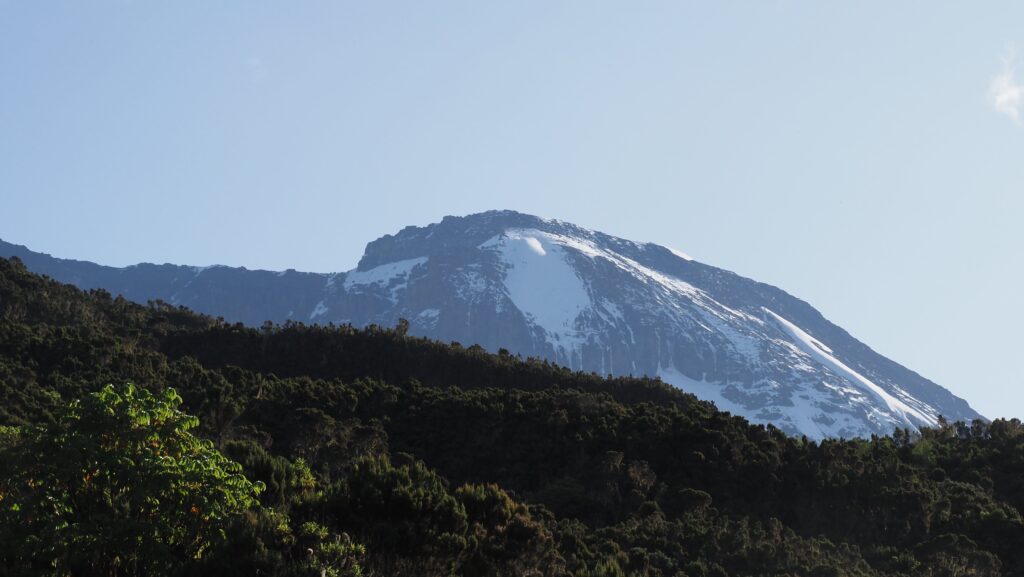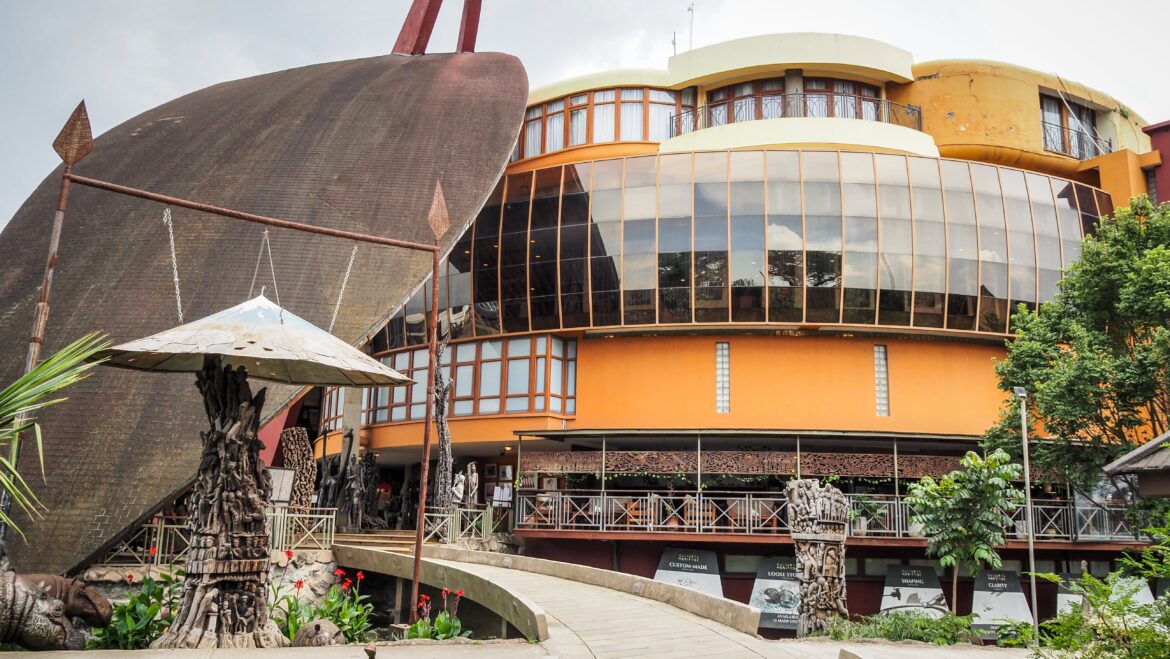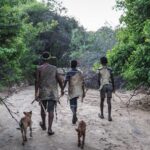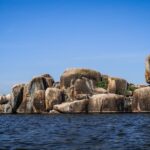Long before European arrival, the Arusha people, a branch of the larger Maasai ethnic group, inhabited the region. They were primarily farmers and cattle herders, taking advantage of the area’s fertile volcanic soil. The nearby Maasai, known for their warrior traditions, also played a key role in the region, sometimes clashing with other groups over land and resources.
The Germans arrived in the late 19th century and established control over the area as part of German East Africa. They built administrative offices and encouraged coffee farming, laying the foundation for Arusha’s future as an agricultural hub.
British forces took over from the Germans during World War I, incorporating Arusha into British Tanganyika. The British continued coffee and sisal production, further developing Arusha’s infrastructure.
In the 1950s, Arusha became a major trade and administration centre, attracting people from different ethnic backgrounds, including Chagga, Meru, and Indian traders.
In 1961, Tanzania gained independence, and Arusha became a key political and economic centre. In 1967, the city gained international recognition when Julius Nyerere announced the Arusha Declaration, which established Ujamaa (African socialism) as Tanzania’s national policy. This emphasized self-reliance, collective farming, and nationalized industries.
Today, Arusha is a thriving city known for being the gateway to safari destinations like Serengeti, Ngorongoro, and Mount Kilimanjaro as well as hosting the East African Community (EAC) headquarters and formerly the International Criminal Tribunal for Rwanda (ICTR).
How to get there?
By Air
The closest airport is Kilimanjaro International Airport (JRO), located about 50 km (1 hour) from Arusha. It serves international and domestic flights.
Alternatively, you can fly into Arusha Airport (ARK), which mainly handles domestic flights from Dar es Salaam, Zanzibar, and Serengeti.
By Road
From Dar es Salaam (620 km, 10-12 hours): Luxury buses like Kilimanjaro Express, Dar Express, and Shabiby cost $25-$40.
From Moshi (80 km, 1.5 hours) – Shared taxis, buses, or private cars are available.
From Nairobi, Kenya (270 km, 5-6 hours): Daily shuttles. The journey includes a border crossing at Namanga.
By Train
Tanzania Railways operates a slow but scenic train from Dar es Salaam to Moshi, with onward connections to Arusha. It’s an adventure but not the fastest option.

The best time to visit
June to October (Dry Season)
Clear skies, little to no rain, and cool temperatures. Ideal for safari in nearby parks (Serengeti, Ngorongoro, Tarangire). Great for hiking and outdoor activities (Mount Meru, Arusha National Park). During peak tourist seasons, it’s better to book accommodation in advance.
January to mid-March (Short Dry Season)
Warm weather and green landscapes after the short rains. Perfect for photography and cultural experiences. Good for Kilimanjaro or Mount Meru trekking.
Months to avoid:
Mid-March to May (Long Rainy Season)
Heavy rains can make safari roads muddy and hiking trails slippery. Fewer tourists, so you might find discounted rates.
November to early December (Short Rains)
The weather is less predictable, but the parks are lush and beautiful. A decent option if you want fewer crowds.
Where to stay?
I recommend the Bright Star Hotel. It’s in a very quiet area with the city centre easily accessible by boda boda or tuk ruk. The staff is incredibly friendly, and they serve a very nice breakfast, which is included in the price. The internet isn’t the fastest, but hey, it works! Only the road leading to the hotel could be improved!
Places worth seeing in Arusha
I wanted to get around the town with a local guide to hear the commentary and I found an excellent offer with a lot of positive reviews on Get Your Guide. I decided to give it a try and I was met the next day by the guide: Daudi. He was a young and nice guy, repeating plenty of times that I am most welcome in Tanzania.
We checked from the outside buildings such as: Arusha International Conference Centre, Mount Meru Regional Referral Hospital and Arusha City District Office before stepping inside National Natural History Museum in the old German Boma. The exposition was quite interesting, about flora and fauna in the region and the evolution of human beings.
Then. we went to the Maasai Market which was nothing more than the place with souvenirs. Everyone was inviting me to his or her shop “just to have a look”. Unfortunately, I still had two months of travelling in Tanzania ahead of me and my luggage was very limited so I didn’t buy anything.
Next sight on our tour was the Clock Tower. It is located at the heart of Arusha, at a major intersection that connects the city’s key roads. It is often said to be the “midpoint” between Cairo, Egypt, and Cape Town, South Africa, though this is more symbolic than geographically precise.
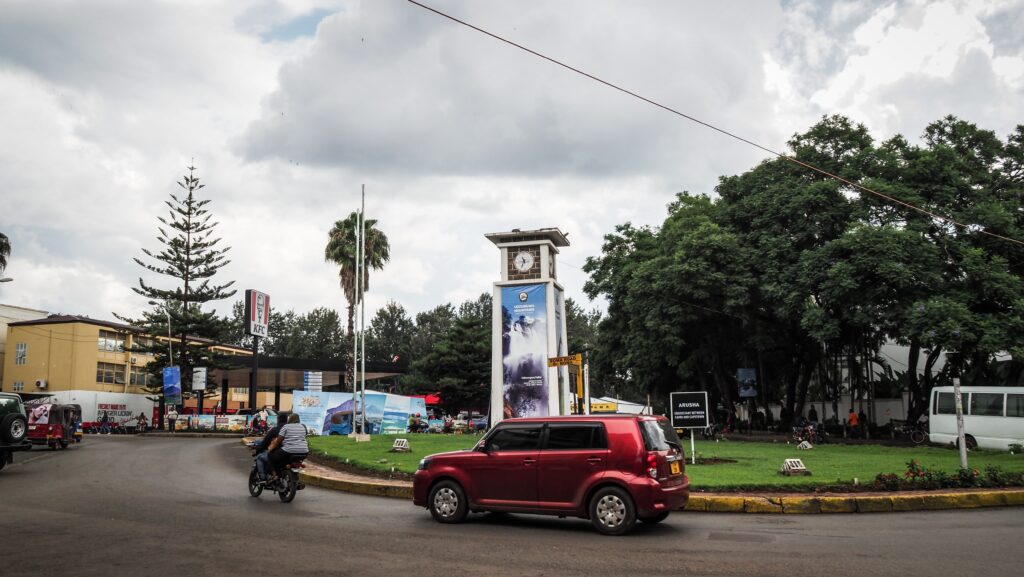
Near the roundabout with Clock Tower, there is a hotel called Four Points by Sheraton Arusha. Of course, it was out of my budget to stay there, but Daudi knew the staff so we were allowed to go inside and see the historical building in which it was located as well as the gallery of old photographies.
Afterwards, we came inside a jewellery shop selling products made with Tanzanite and there was also a small museum where the staff provided me with a tour. Tanzanite is a rare and valuable blue-violet gemstone found only in Tanzania, specifically in the Mererani Hills near Arusha. It is a variety of the mineral zoisite and was discovered in 1967. Tanzanite’s deep blue and violet hues are unique and often compared to sapphires, but it has a different brilliance and pleochroic effect (changing colors when viewed from different angles). It is commonly used in rings, necklaces, and earrings, often set in white gold or platinum.
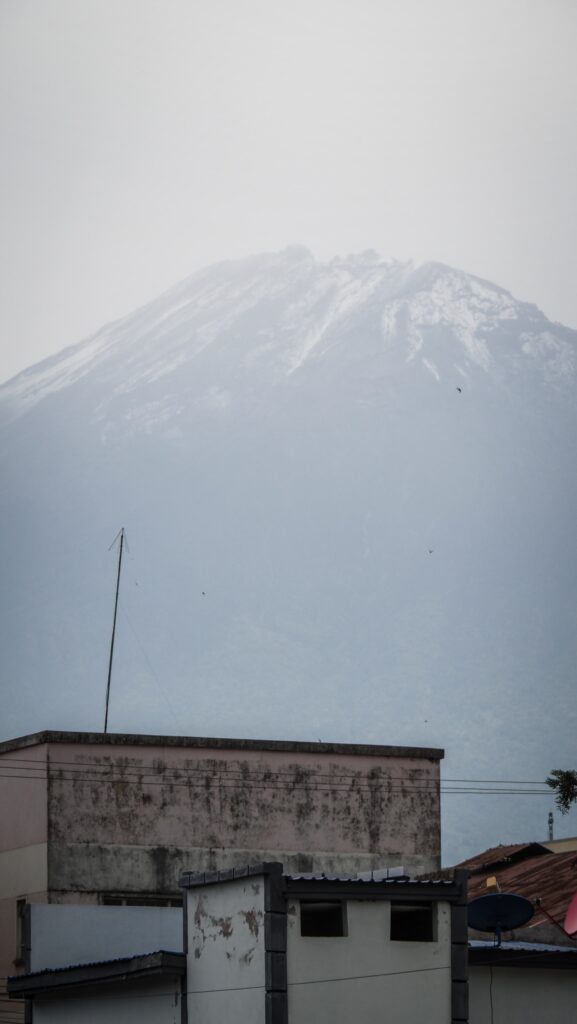

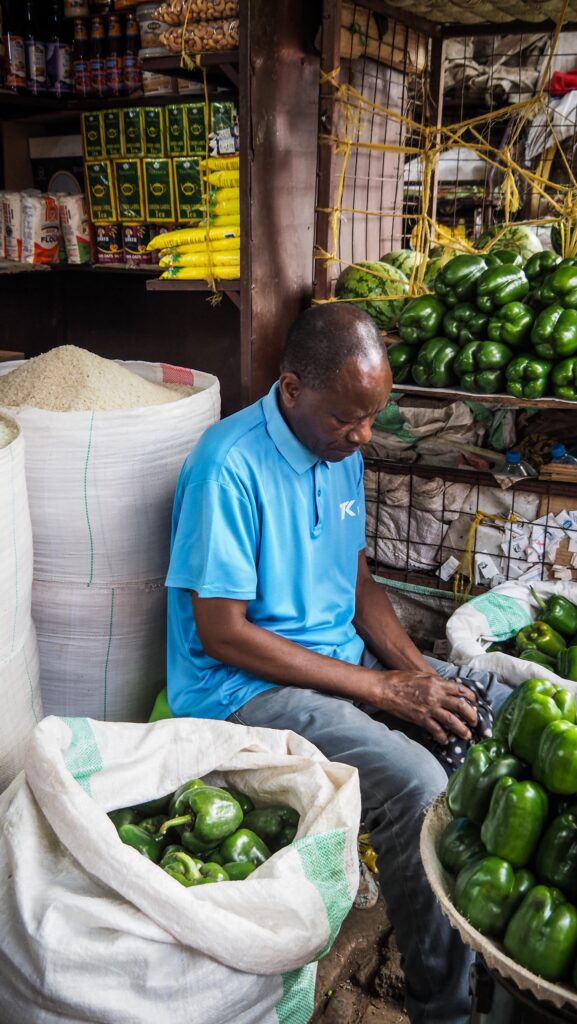
We bought grilled corn from the street vendor and continued to the Central Market, full of fresh products, spices, and plenty of other stuff. Super interesting place, full of life and excellent for photography although locals weren’t too happy to see my camera, so it’s always better to ask for permission, before photographing people.
After that we stopped to drink some coffee with milk, honey and spices. Damn, it was delicious! It was definitely one of those experiences that probably I would never have tried without a guide.
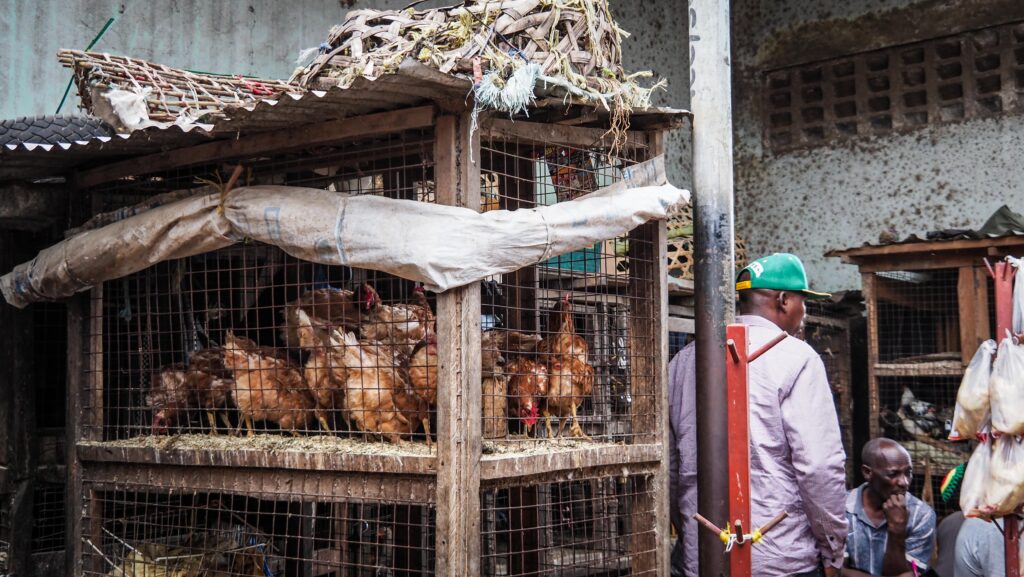

Then, we jumped into the car and drove to the Cultural Heritage Center. It is a mix of an art gallery, museum, and shopping center, offering visitors a chance to explore traditional and contemporary African art, including paintings, sculptures, jewelry, and artifacts. The building has an interesting architecture, designed to resemble the Uhuru Peak of Kilimanjaro.
It was the last point of our tour and then I was dropped near the Clock Tower. Overall, very interesting tour and well worth the price. I was so glad that I did it! As mentioned before, the trip can be found on Get Your Guide or you can contact Daudi on his WhatsApp directly: +255 621 146 836.
Later, I walked by myself to Arusha Declaration Museum to learn about the key policy document in Tanzania’s socialist history, announced by President Julius Nyerere on February 5, 1967. It outlined the country’s vision for Ujamaa (African socialism) and self-reliance. Even though there was a sign with entrance fees, I didn’t see anyone in the ticket office so I just went inside and left within 15 minutes. Glad that I did so because it was definitely not worth paying 10 USD!
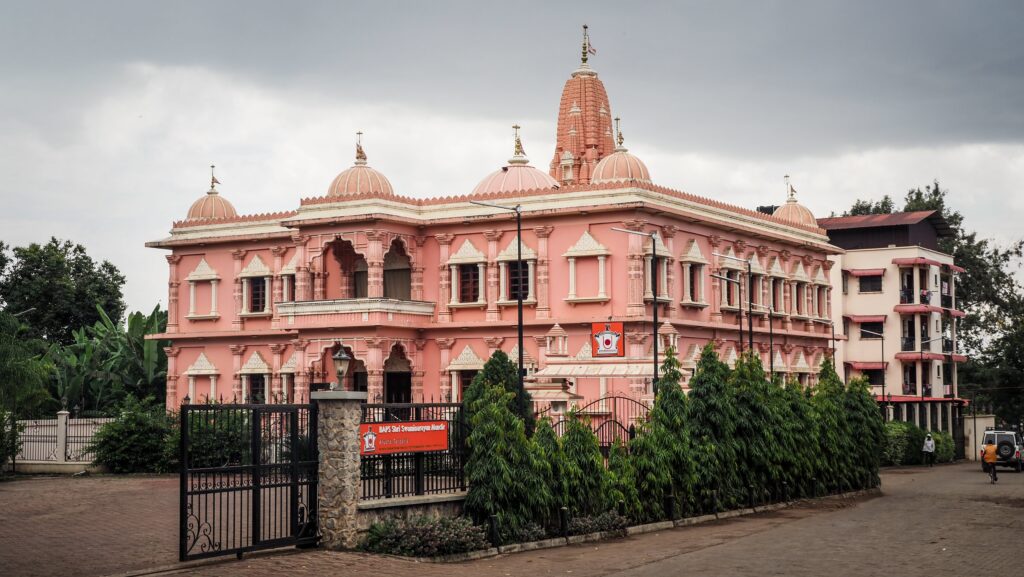
Napuru Waterfalls
It is a lush, tropical forest just a few kilometres from Moshi, offering a peaceful escape into nature. Home to colobus monkeys, blue monkeys, dik-diks, and a variety of bird species. The forest can be explored on guided nature walks or bike tours.
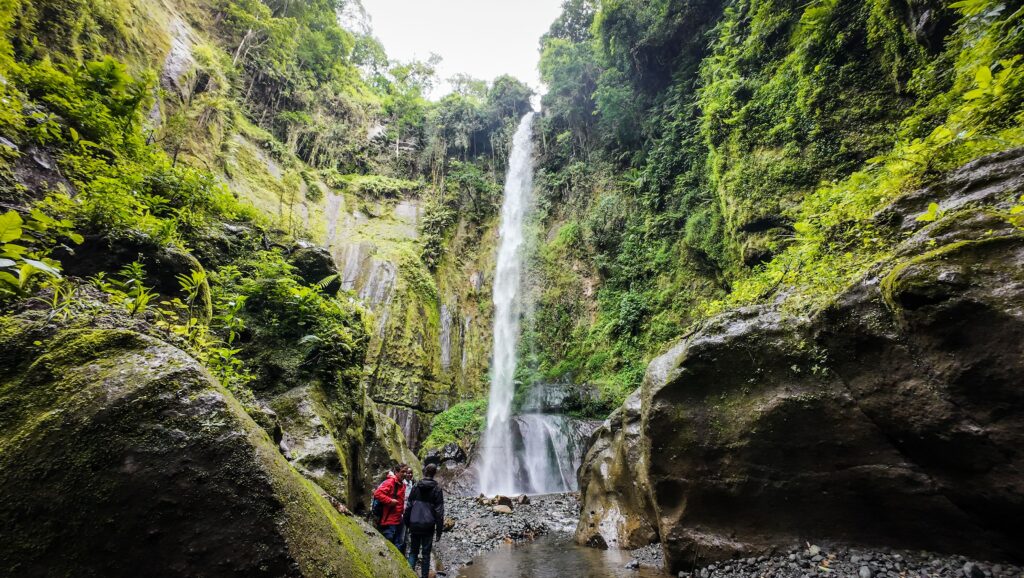
Places worth seeing outside of Arusha
Mount Meru & Arusha National Park
Mount Meru, standing at 4,566 meters, is the second-highest peak in Tanzania and is located within Arusha National Park. This dormant volcano provides a challenging trekking experience through diverse landscapes, including savannah, dense forests, and alpine zones. The ascent usually takes three to four days, with climbers staying in mountain huts like Miriakamba and Saddle huts. On clear days, the summit offers breathtaking views of Mount Kilimanjaro. The climb isn’t cheap though, and you should budget around 1.000 USD.
Arusha National Park features varied ecosystems, from lush rainforests to open savannahs, and is home to a wide range of wildlife, including giraffes, zebras, buffalos, and various primates. Visitors can enjoy activities such as game drives, guided nature walks, and canoeing on the Momella Lakes.
I inquired about the cost of a day trip to the park, and it was always over 300 USD, which I found ridiculous, taking into consideration that a six-day safari to Serengeti, Ngorongoro, Lake Manyara and Tarangire National Parks cost me 200 USD per day, including food and overnight stays. Of course, the cost will be lower if you travel in a group and share the cost of the safari car.
Ifulong Cultural Tourism
‘Ifulong’ is derived from a Meru tribe word, which stands for a seasonal river valley with fertile banks that people use for growing various seasonal grains and vegetables. They have very interesting hiking programmes that also include the cultural aspect of the area, and you can even stay for the night in a local homestay.
I found this activity by accident when I visited the tourist information office with the intention of asking how to get to Arusha National Park. It proved to be out of my budget, but I saw the leaflet of Ifulong Cultural Tourism and decided to send them a message on WhatsApp asking about a possible one-day trip. Emmanuel was very responsive and I decided to do the hike the next day!
I took dala dala from Arusha to Someli, which is en route to the Usa River, and the guide was waiting for me at the bus stop. We started walking through the fields and climbing higher and higher. We met a lot of villagers, and it seemed that Emmanuel knew literally everyone, and he was a master of small talk. We continued to the viewpoint of Mount Meru and then started the descent, hiking back to the square with the school and the house of my guide, where we had a delicious lunch (banana soup, beans, pilau and fruits). After lunch, we had coffee made from local beans, together with milk and even vanilla. It tasted amazing!
Emmanuel was very talkative and interested in my country, so we had a really long and nice conversation on the way about the cultural differences between Poland and Tanzania. We also witnessed a meeting of villagers under the oldest tree in the area. Community support is important in this region of the world and if someone gets sick, then other people contribute at least a little bit to help. It is a kind of informal social insurance.
Last but not least, we stopped at the local bar, where I tried banana wine. A bit of a strange drink, sparkling and quite strong. Not something that I would like to drink very often but the experience of sitting in a bar with local guys was nice.
You may check the website of Ifulong Cultural Tourism HERE. Phone number to Emmanuel: +255 762 012 006. You can contact him on WhatsApp.
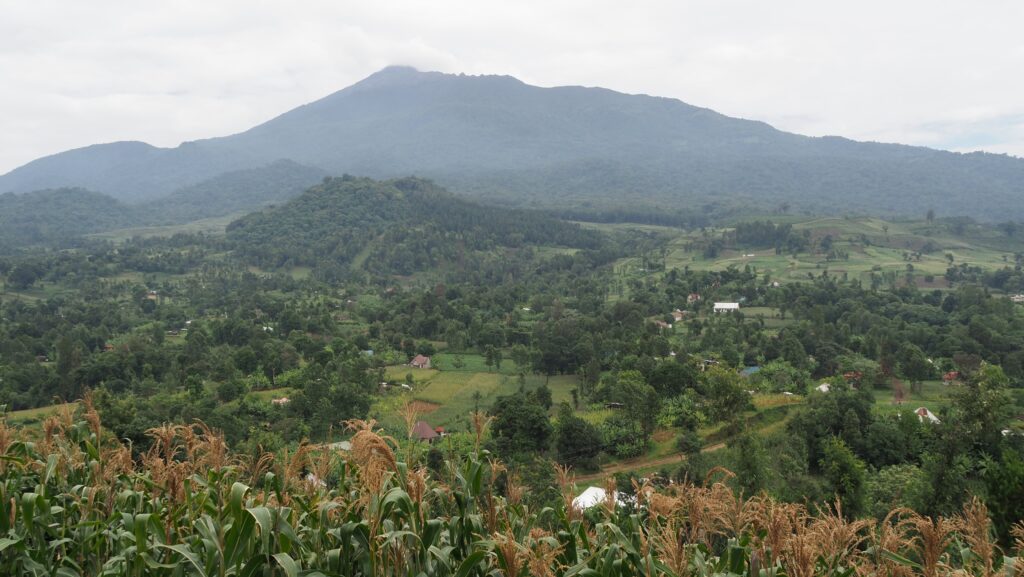
Monduli Juu Bush Maasai Experience
Monduli Juu is a scenic, highland area near Monduli town in northern Tanzania, known for its stunning landscapes, Maasai culture, and hiking opportunities. It is part of the Monduli Mountains, located about 50 km from Arusha.
The area is home to traditional Maasai communities, offering an authentic cultural experience, including visits to bomas (homesteads), learning about Maasai traditions, and experiencing their warrior training rituals.
I passed by many Maasai bomas in the Ngorongoro area, but all had rather negative reviews as not being very authentic. Therefore, I was looking for a better experience, and the Monduli Juu Bush Maasai Experience seemed to offer what I wanted. I contacted them on WhatsApp and was advised to come over on Saturday as then we would have the chance to have a look at the traditional Maasai Market.
Read more about my day trip to Monduli Juu in a separate post HERE.
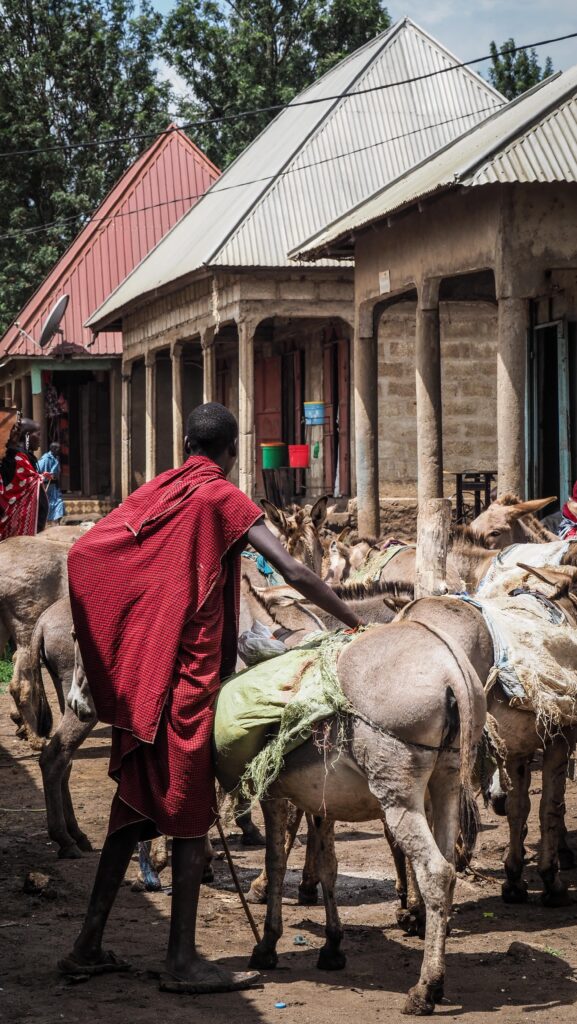

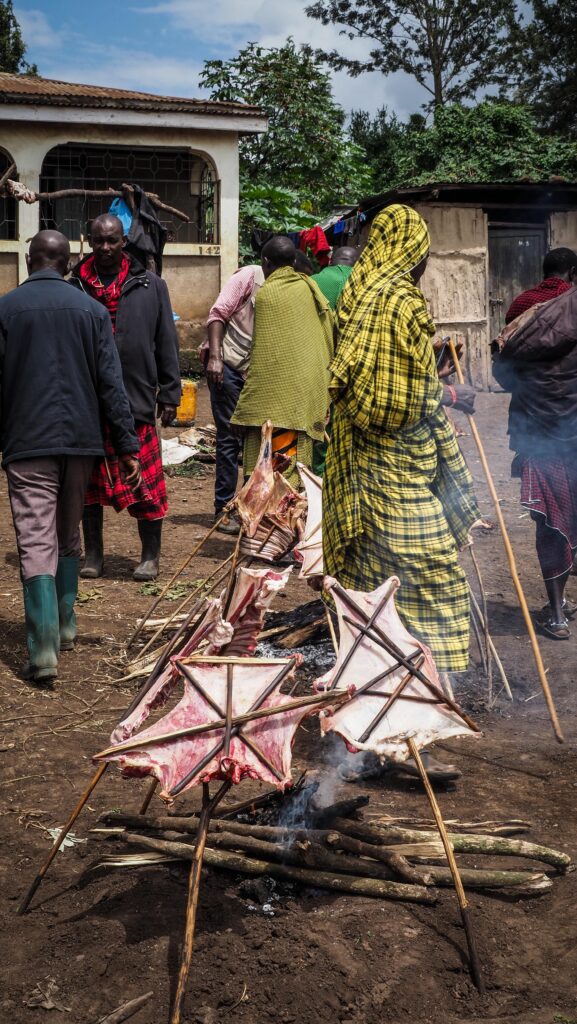
Olpopongi Maasai Cultural Village & Museum
An alternative way to experience Maasai culture. They offer day tours and overnight tours where you will sleep in traditional houses.
Both options include a museum and village tour, a traditional lunch, a walking safari in the Maasai territory, and learning about Maasai hunting techniques as well as medicine related to wildlife. If you stay overnight, then you will learn more about ceremonies, and experience a campfire with a BBQ buffet and breakfast on the next day.
You can take dala dala from Arusha to Sanya Juu and then continue on a motorbike or by tuk-tuk. A day tour costs about 65 USD, while an overnight stay costs 115 USD (as of February 2025).
Mount Longido
Situated near the Kenya-Tanzania border, Mount Longido provides stunning views of Mount Kilimanjaro, Mount Meru, and the surrounding plains. The area is home to the Maasai people, who graze their cattle on its lower slopes. The trek to the summit is a challenging but rewarding experience, passing through acacia woodlands, montane forests, and rocky outcrops.
Read more about Mount Longido in a separate post HERE.

Lake Manyara National Park
Visitors to Lake Manyara can enjoy game drives, birdwatching, canoeing (seasonal), and cultural experiences in the nearby town of Mto wa Mbu. The lake is also home to fish species like tilapia and catfish, with the endangered Oreochromis amphimelas endemic to the area.
Read more about Lake Manyara National Park in a separate post HERE.
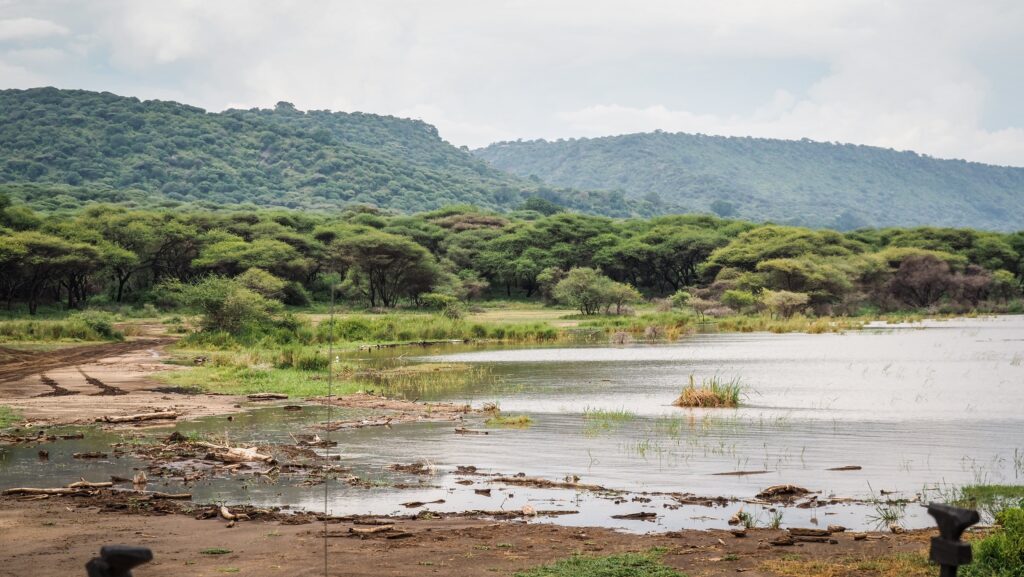
Lake Eyasi
Lake Eyasi is a shallow salt lake, located at the base of the Rift Valley. It lies southwest of the famous Serengeti National Park and just south of the Ngorongoro Crater. The lake’s size and water levels fluctuate dramatically depending on rainfall, sometimes nearly drying up in the dry season.
The region around Lake Eyasi is home to the Hadzabe as well as the Datonga people. The lake and its surroundings provide a unique ecosystem that supports a variety of bird species, including flamingos and pelicans, making it an interesting destination for both cultural and ecological tourism.
Read more about Lake Eyasi in a separate post HERE.

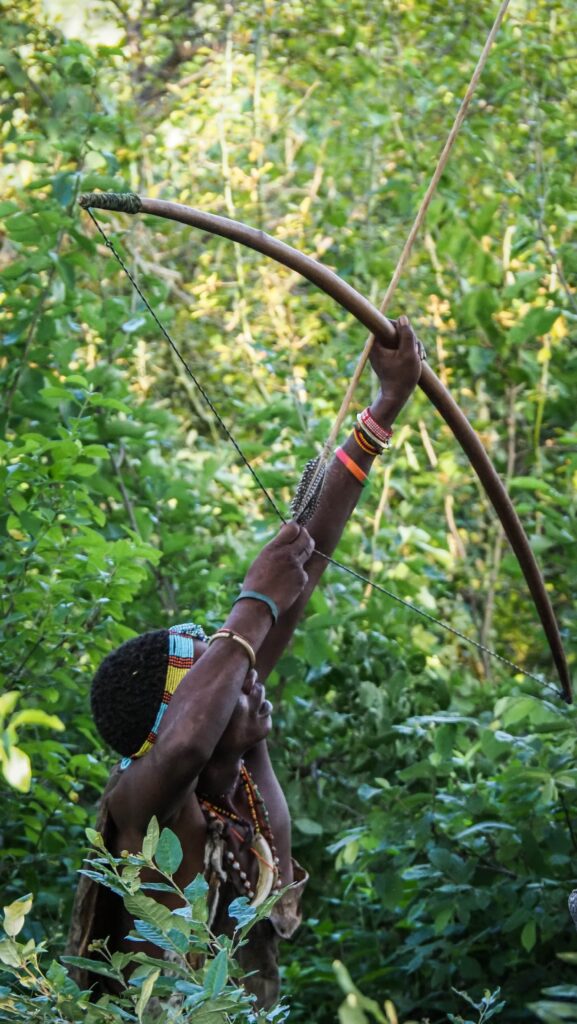
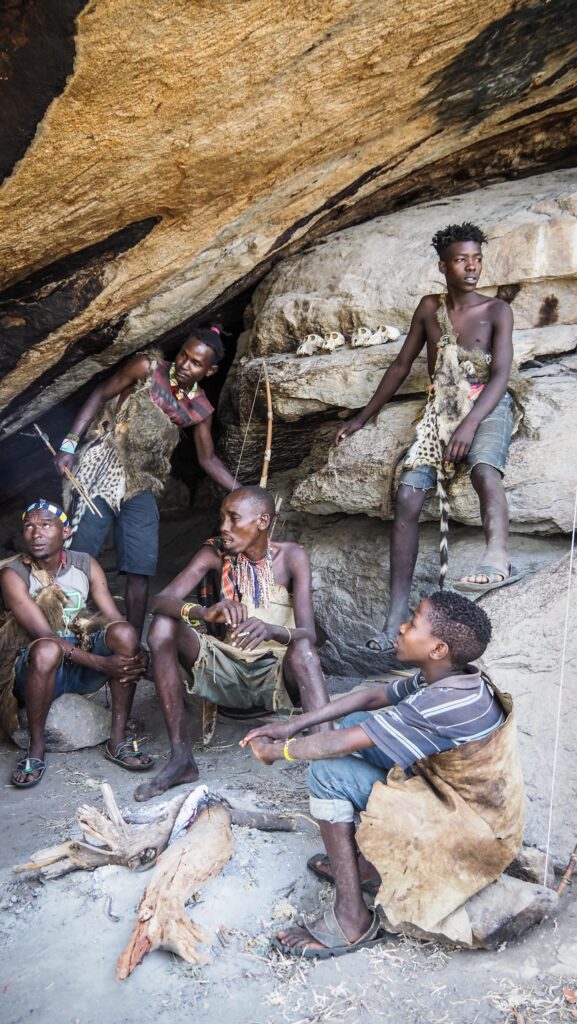
Ngorongoro Conservation Area
The Ngorongoro Conservation Area is a unique protected region known for its diverse wildlife, stunning landscapes, and rich history. It is home to the Ngorongoro Crater, the world’s largest inactive, intact volcanic caldera, which supports many animals, including the Big Five: lions, elephants, buffaloes, leopards, and rhinos.
Read more about Ngorongoro Conservation Area in a separate post HERE.

Tarangire National Park
The park’s landscape is known for its iconic baobab trees, also known as the “Tree of Life.” Other than that, you will experience rolling savannas, wetlands, and acacia woodlands.
Tarangire is home to one of the largest elephant populations in Tanzania. You may also spot lions, leopards, cheetahs, giraffes, zebras, buffalo, wildebeest, and over 500 bird species.
Read more about Tarangire National Park in a separate post HERE.

Serengeti National Park
The Serengeti is one of Africa’s most iconic ecosystems, stretching across Tanzania and into Kenya. The name Serengeti comes from the Maasai word “Siringet,” meaning “endless plains.” This vast savanna is home to the Great Migration, where millions of wildebeest, zebras, and gazelles move across the land in search of fresh grazing, followed closely by predators like lions, cheetahs, and hyenas.
Read more about Mount Longido in a separate post HERE.
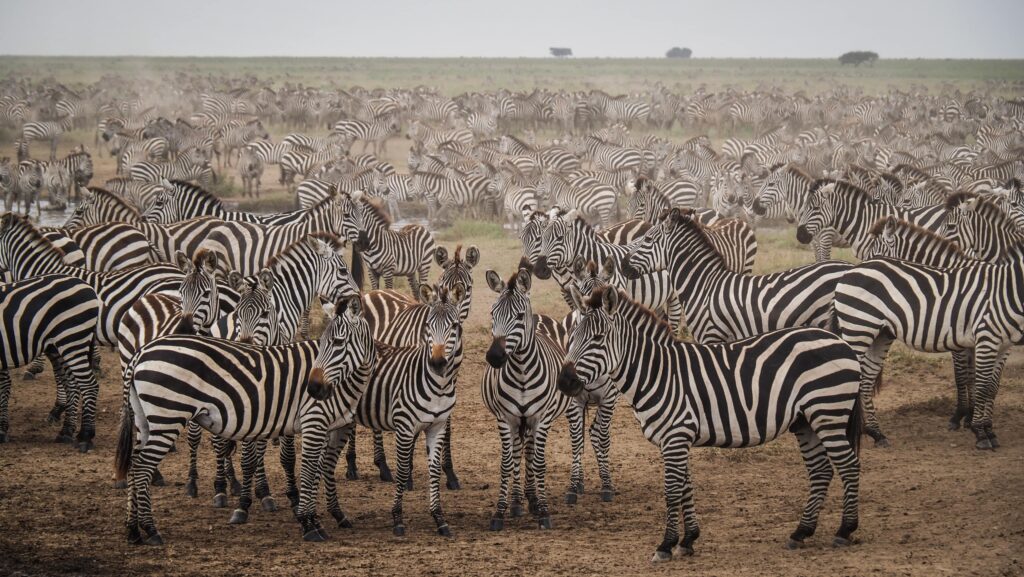
Lake Natron & Ol Doinyo Lengai
Lake Natron, located near the Kenyan border, is a unique and highly alkaline lake known for its striking red and orange hues caused by the presence of salt-loving microorganisms and algae. The lake is one of the most important breeding grounds for lesser flamingos, as its extreme conditions provide a safe environment from predators. Due to high temperatures and mineral-rich waters, only a few species can survive here, making it a fascinating yet harsh ecosystem.
Near the lake stands Ol Doinyo Lengai, an active volcano often called the “Mountain of God” by the local Maasai people. It is the only volcano in the world that erupts natrocarbonatite lava, which is much cooler and less viscous than typical lava.
Climbing typically takes 5 to 7 hours to ascend and 3 to 4 hours to descend. Most climbers start around midnight to reach the summit by sunrise, as daytime temperatures can be extremely high. The trek is steep and challenging, requiring good physical fitness, but the reward is a stunning sunrise view over Lake Natron and the Great Rift Valley.
Visiting Lake Natron is quite expensive. You can reach the gate by travelling from Arusha with a Loliondo Bus, but you will need to organize further transfer to the accommodation. I inquired about the costs at Lake Natron Maasain Guest House, and here is what they told me:
The gate fee is 35 USD per person. Fees for activities like a hike to the lake or the waterfalls: 20 USD per person per activity. Wildlife fee 29,50 USD per person per night.
To climb the volcano: 100 USD per person (if you are with two people, then it’s 140 USD), plus a wildlife fee of 23.50 USD per person. On top of that, you will have to rent a car to get to the starting point of the climb. They have a car available for 70 USD. The car will wait for you until you come down from the volcano.
They charge 25 USD per person for the guesthouse, with breakfast included. Lunch costs 10 USD and dinner 15 USD.
If it’s in your budget, it might be a nice experience. I haven’t done it, as some of those costs sound like a pure scam to just empty tourists’ pockets. Unfortunately, typical practice in Tanzania.
Moshi
Moshi is a vibrant town known for its coffee culture and tourism industry and as a base for Kilimanjaro climbers. Despite modernization, it retains its rich Chagga heritage and colonial-era influences.
Read more about Moshi in a separate post HERE.

Kilimanjaro
If you’re in Arusha but don’t have time for a full Kilimanjaro climb, day hikes offer a perfect way to experience the mountain’s beauty, diverse landscapes, and rich culture without the intense commitment of a multi-day trek. Here are two popular variants:
1. Kilimanjaro Day Hike via Marangu Route
From Marangu Gate (1,870m) to Mandara Hut (2,700m). The distance is approximately 8 km round trip (4-6 hours). You will walk through the lush rainforest, hopefully spot colobus monkeys, and enjoy views of Maundi Crater.
Difficulty: Moderate
2. Kilimanjaro Day Hike via Machame Route
From Machame Gate (1,800m) to the First Campsite (~2,835m). The distance is approximately 11 km round trip (5-7 hours). You will walk through dense rainforests with very scenic trails, but this option is tougher than the Marangu variant.
Difficulty: Moderate to Hard
